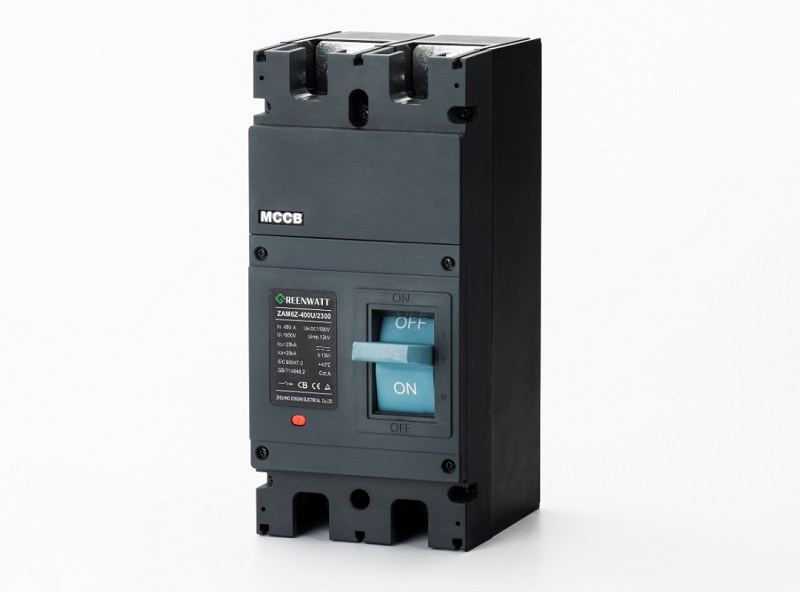From 500 V to 1500 V — How Advanced DC Molded-Case Circuit Breakers Safeguard Modern Solar, EV Charging & Energy-Storage Systems
2025-08-21
DC Voltage Leap Protection Problems
In 2025, I witnessed a 200MW solar plant tableside and a DC 500V molded case circuit breaker began to smoke. When it came to light, string voltage had increased to 580V in sub-zero temperatures. That was the moment that struck me over how traditional DC protection equipment would soon face the kind of hazards it had never addressed before as solar system voltage levels have risen. The original DC 500V has become today DC 1000V, as has the main one. The most recent is still DC 1500V in energy storage applications, and each voltage leap has surpassed the fundamental technological bounds of DC MCCBs caused by a voltage revolution. Because I am an electrical engineer with a decade of expertise in solar EPC, I have seen this trend in protection equipment stimulate technological advancements, and I grasp the importance of this balance between system efficiency and safety reliability.
DC MCCB Operating Principles and AC MCCBs differ in key aspects
DC MCCBs operate on the same principles as AC MCCBs. The MCCB’s key operating principle is to separate the switch’s contact points rapidly to create a gap. Unlike AC circuit breakers, for which arc extinction is relatively simple, resulting from natural current diminishing zero-crossings, DC MCCBs must interrupt continuous current flow. The major difference is the method of arc management, with DC arcs being softer and more difficult to extinguish. Because in the 2021 project in Inner Mongolia, a poorly selected DC MCCB for the system failed to interrupt a 15kA short-circuit current at 1000V DC, we could not depend on the DC breaking capacity rating of an an AC equivalent. Arc extinction technology occurs in the form of magnetic blow-out. In a DC MCCB, for example, insulating gas cools and isolates the arc between the node, making it much more reliable than earlier designs.
Three Voltage Level Comparison: DC 500V, 1000V, 1500V
DC 500V Systems
The workhorse of early utility-scale solar installations, DC 500V systems demonstrate proven reliability but lack string configuration flexibility. For example, working on multiple 50MW plants in Xinjiang during 2018-2020, I saw DC 500V MCCBs like the Schneider NSX series provide reliable performance with more parallel strings. As a result, it took more than 40 strings in a package for the plant to reach the target power output.
DC 1000V Systems
DC 1000V systems have already become the current industry standard for large-scale solar plants and reduce BOS costs by 8-12% compared to 500V ones. ABB’s Tmax XT series and Eaton’s Magnum DS MCCBs are our go-to picks for 1000V applications due to their available breaking capacities up to 20 kA.
DC 1500V Systems
DC 1500V systems have only begun emerging and are currently used in energy storage and some large-scale solar projects. Nevertheless, their use continues to push the efficiency boundaries. For now, certified solutions are available from premium manufacturers like Siemens 3VA series and Mitsubishi.
Typical Application Scenarios
Solar Array and String Protection
In combiner boxes, DC MCCBs act as the first line of defense against overcurrent and short-circuit faults. With a 2022 project in Qinghai, I also learned that high-altitude installations 3200m elevation require derating considerations as standard 1000V MCCBs needed 15% because of air’s reduced density heat dissipation.

EV Charging and Rail Traction
Fast-charging stations at 800V DC require MCCBs with rapid cycling ability. For a charging infrastructure project in Shanghai, we specified MCCBs with mechanical ratings more than 20,000 operations to manage frequent load switching.
Energy Storage & Data Center DC Bus
Battery energy storage systems are more frequently operating at 1500 V DC to minimize conversion losses, such as the CESI and Huawei storage system in UAE. The implication of this is the need to coordinate MCCB protection with battery management systems; this can be a precarious balance, but I have honed my understanding through numerous utility-scale storage projects.
Selection criteria and real-world case studies are detailed in Table 4. Market Trends and Leading Brand Dynamics are presented in and Installation, Commissioning & Maintenance Essentials.
Maintenance Checklist
- Implement thermal imaging surveillance for high-current applications.
- Annual contact resistance measurement.
- Quarterly visual inspection for arc tracking.
- Trip testing per manufacturer intervals.
- Connection torque verification after thermal cycling.

Concluding: A Future of Safety and Digitalization
The shift from 500V to 1500V DC systems is much more than a simple voltage scaling: it represents the solar industry’s constant focus on efficiency and cost reduction. As we prepare to work with higher voltages, DC MCCBs must mature beyond simple protection mechanisms into intelligent system components capable of providing real-time health status and predictive maintenance health. The future will require ongoing collaboration between equipment manufacturers, system integrators, and field-based engineers such as ourselves. Together, we can ensure that the expanded potential of high voltage DC systems frame translates into a safer and more sustainable renewable energy system. The target? Solid-state DC security and 3000V systems. The voltage uprising is burning bright, and so must our safety commitment.




